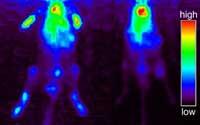New discovery of arthritis
Rheumatoid arthritis occurs when the body's defenses attack the joints. Until 1996 it was thought that the most appropriate way to investigate the disease was the study of collagen. Rats were used to produce antibodies against collagen, the main component of joint cartilage.
Later, the researchers created rats that contained antibodies against the enzyme GPI, an enzyme that helps to obtain energy from sugar. These rats also saw that they developed arthritis, so they thought that perhaps the key to arthritis was not collagen, but the GPI enzyme much more widespread.

Now the two groups of researchers have discovered more links between the GPI enzyme and the tendency to turn it into more joint primer. Using positron emission tomography, one group used radioactively marked GPI antibodies. These antibodies were injected into rats and the joints of the claws immediately began to grow. This rapid accumulation of antibodies corresponded to the development of arthritis in humans, since normally the pain begins in our hands and legs.
The other group found that GPI antibodies attracted a compound called C3. This compound causes inflammation of the joints and although there are normally anti-inflammatory proteins in the tissues, they do not contain them. Thus, inflammation is constantly growing.
The findings have shown that antibodies against an extended molecule in the body, CPI, can produce a localized disease, arthritis. However, as with most studies, they still do not have sufficient evidence to rule out collagen from arthritis research, nor to present BMI as responsible for the disease. Probably these two molecules and perhaps some more are needed to reach the core of arthritis, but the new discoveries have broadened the knowledge of the disease.
Buletina
Bidali zure helbide elektronikoa eta jaso asteroko buletina zure sarrera-ontzian











